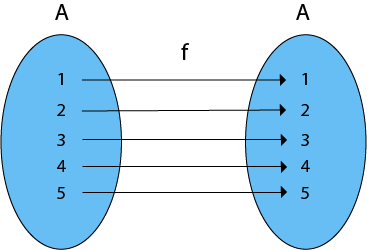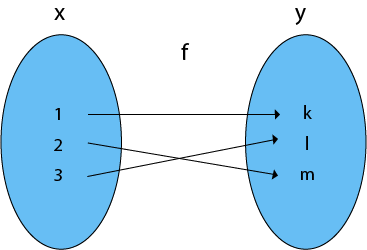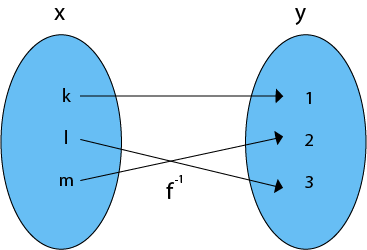94
Identity Functions
The function f is called the identity function if each element of set A has an image on itself i.e. f (a) = a ∀ a ∈ A.
It is denoted by I.
Example:
The function f is an identity function as each element of A is mapped onto itself. The function f is a one-one and onto

Invertible (Inverse) Functions
A function f: X → Y is invertible if and only if it is a bijective function.
Consider the bijective (one to one onto) function f: X → Y. As f is a one to one, therefore, each element of X corresponds to a distinct element of Y. As f is onto, there is no element of Y which is not the image of any element of X, i.e., range = co-domain Y.
The inverse function for f exists if f-1 is a function from Y to X.
Example:

The inverse function of f is shown in fig:

Next TopicComposition of Functions
